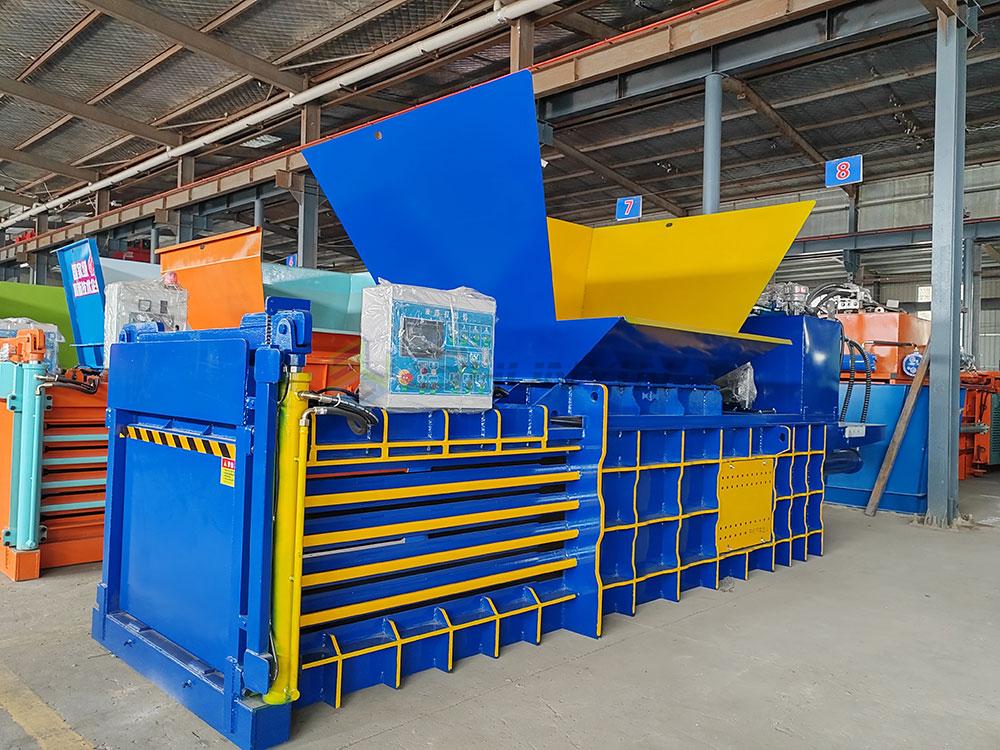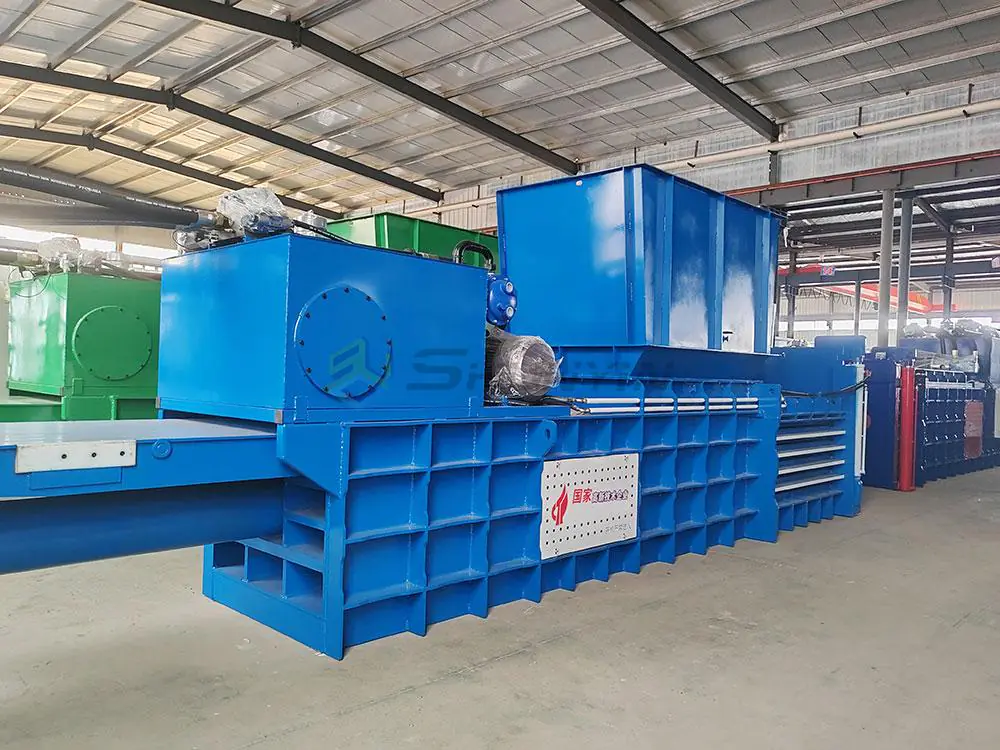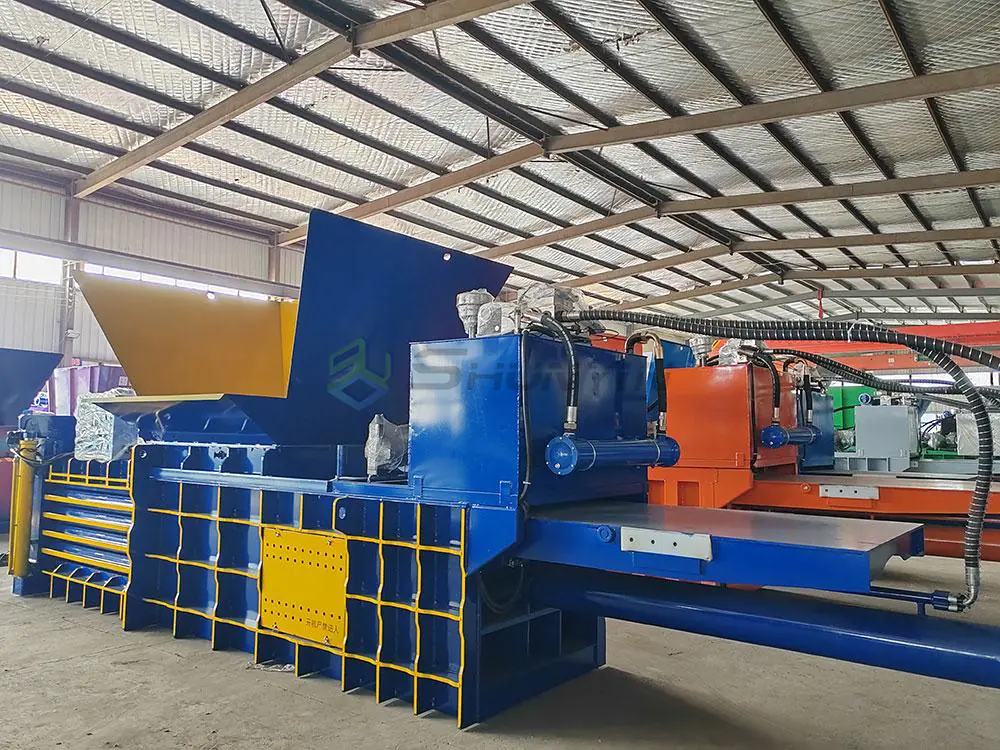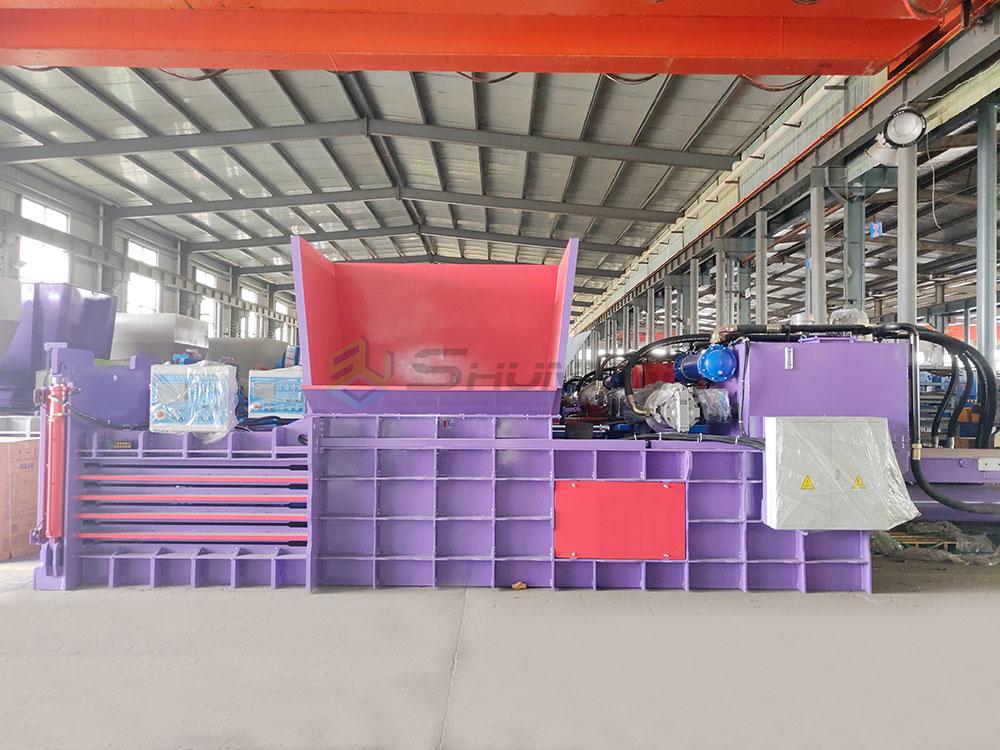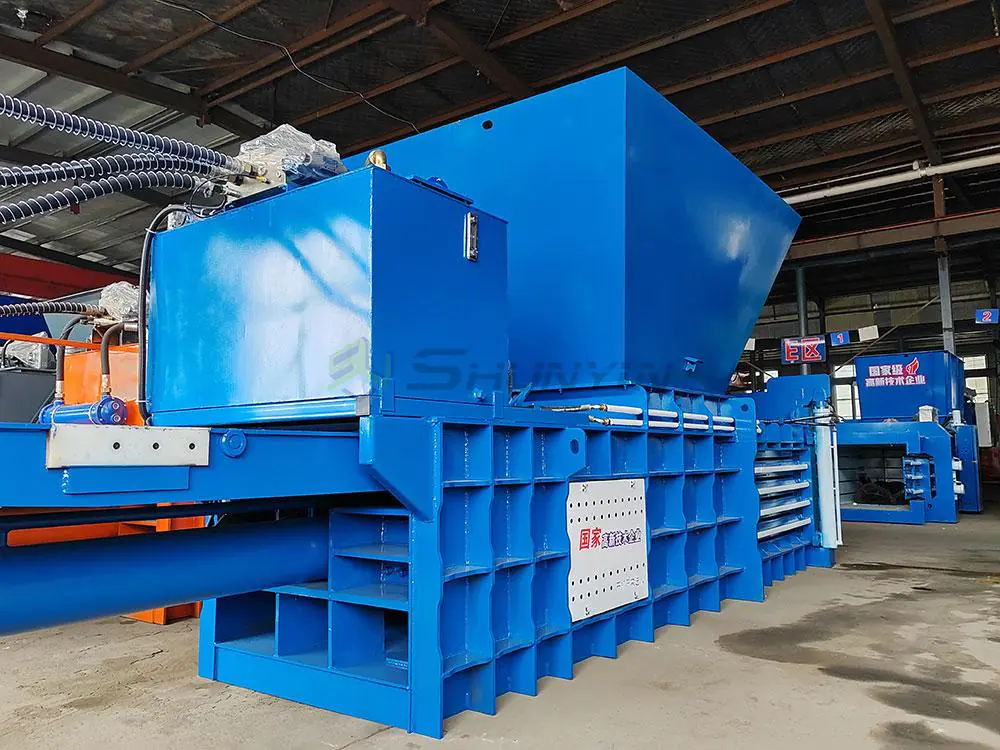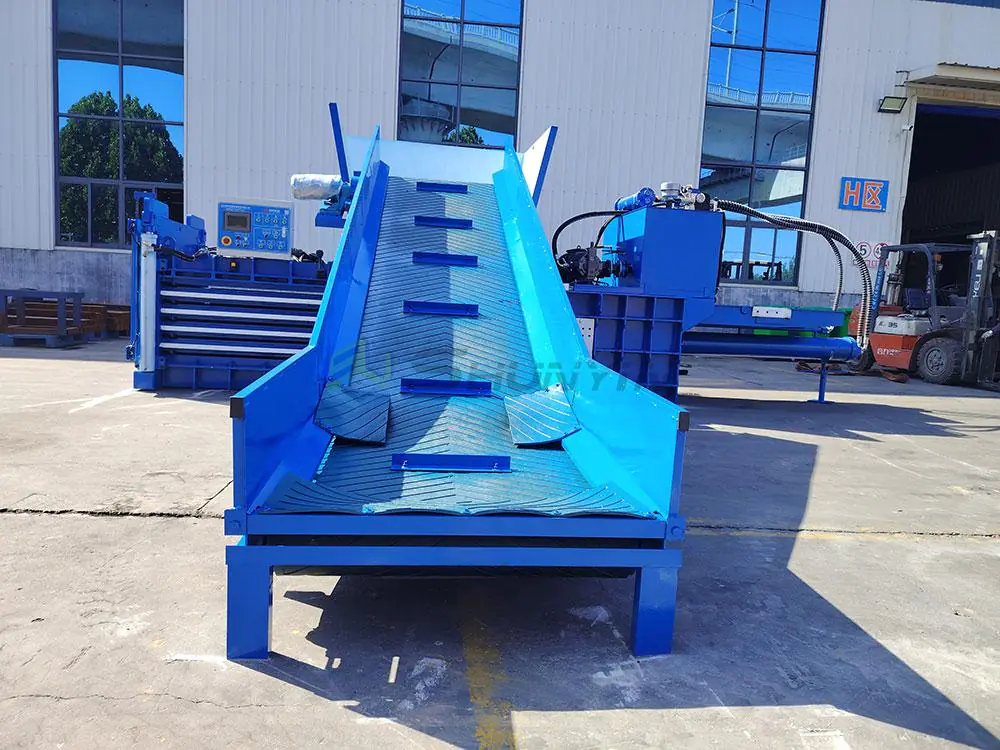
Are you searching for affordable horizontal hydraulic balers but unsure where to source them from? Many businesses face challenges in finding cost-effective and reliable suppliers, risking their investments without the right information. Discovering trustworthy avenues is crucial for securing quality equipment at competitive prices.
Cheap horizontal hydraulic balers from China can be found on B2B marketplaces like Alibaba, Made-in-China, and Global Sources, as well as manufacturer websites like shunyin machinery1. Industrial equipment dealers and exhibitions also offer affordable options, with the best deals achieved by comparing prices, checking reviews, and inquiring about shipping costs.
Imagine obtaining top-quality balers without breaking your budget, enabling your business to thrive in competitive markets. This possibility motivates many exporters to explore Chinese suppliers for their baler needs.
What is the average price of a baler?
Have you ever wondered what the typical cost of a horizontal hydraulic baler is and how to budget for one? Understanding the average price range can help you make informed purchasing decisions and allocate your resources effectively.
The average price of a horizontal hydraulic baler from China ranges between $20,000 to $50,000, depending on the machine’s specifications, capacity, and additional features.

Factors Influencing Baler Prices
Several elements determine the cost of a horizontal hydraulic baler. These include the machine’s capacity, brand reputation, technological advancements, and customization options. Higher capacity balers with advanced features typically command higher prices due to their enhanced performance and efficiency.
Capacity and Features
Balers with larger capacities can handle more material, reducing the frequency of operation and increasing productivity. Features such as automated controls, safety mechanisms, and energy-efficient systems also add to the overall cost but provide long-term benefits in terms of reliability and maintenance.
Customization and After-Sales Support
Customized balers tailored to specific business needs may come at a premium price. Additionally, comprehensive after-sales support, including warranties, maintenance services, and readily available spare parts, can influence the initial investment but ensure sustained operational efficiency.
| Specification | Price Range (USD) | Description |
|---|---|---|
| Low-End Models | $20,000 – $30,000 | Basic features, suitable for small to medium operations |
| Mid-Range Models | $30,000 – $40,000 | Enhanced features, higher capacity, suitable for larger operations |
| High-End Models | $40,000 – $50,000 | Advanced technology, maximum capacity, customized options |
Understanding these factors allows you to assess your requirements accurately and choose a baler that offers the best value for your investment.
What is the price of automatic baler?
Are you curious about the cost differences between manual and automatic horizontal hydraulic balers? This distinction is essential for determining the most suitable and cost-effective option for your business operations.
Automatic horizontal hydraulic balers from China typically range from $35,000 to $60,000, reflecting their advanced automation features and increased efficiency compared to manual models.

Advantages of Automatic Balers
Automatic balers offer numerous benefits that justify their higher price tags. These machines are designed to streamline the baling process, reducing the need for manual intervention and minimizing labor costs. The automation enhances precision, consistency, and speed, leading to higher productivity and lower operational costs in the long run.
Enhanced Efficiency and Productivity
Automatic balers can operate continuously without frequent stops, handling larger volumes of material with minimal human oversight. This capability is particularly beneficial for businesses with high production demands, ensuring that baling processes keep pace with overall operational workflows.
Improved Safety and Reliability
With built-in safety features and automated controls, automatic balers reduce the risk of accidents and equipment malfunctions. These machines are equipped with sensors and monitoring systems that detect potential issues early, allowing for proactive maintenance and minimizing downtime.
Cost-Benefit Analysis
While the initial investment for an automatic baler is higher, the long-term benefits often outweigh the costs. Reduced labor requirements, increased throughput, and lower maintenance expenses contribute to a favorable return on investment (ROI). Businesses can achieve greater operational efficiency and scalability by opting for automatic balers, making them a worthwhile investment despite the higher upfront costs.
| Feature | Manual Baler Price (USD) | Automatic Baler Price (USD) |
|---|---|---|
| Initial Cost | $20,000 – $30,000 | $35,000 – $60,000 |
| Labor Requirement | High | Low |
| Operational Speed | Moderate | High |
| Maintenance Frequency | Higher | Lower |
| Precision and Consistency | Basic | Advanced |
By evaluating the specific needs and operational goals of your business, you can determine whether the additional investment in an automatic baler aligns with your long-term objectives and financial planning.
What is a hydraulic baling machine?
Are you unsure about what a hydraulic baling machine entails and how it differs from other types of balers? Clarifying these details is essential for selecting the right equipment that meets your operational requirements and budget constraints.
A hydraulic baling machine uses hydraulic pressure to compress materials into dense bales, offering superior control and efficiency compared to mechanical or pneumatic balers.

Components and Functionality
Hydraulic balers consist of several key components, including a hydraulic ram, a compression chamber, a control system, and safety mechanisms. The hydraulic ram applies consistent pressure to the materials, ensuring uniform compression and high-density bales. The control system allows operators to adjust settings such as bale size, compression force, and cycle time, providing flexibility to handle different materials and production volumes.
Advantages of Hydraulic Systems
Hydraulic systems offer precise control over the baling process, resulting in more consistent and higher-quality bales. They are capable of exerting substantial force, allowing them to handle a wide range of materials, including bulky or fibrous substances. Additionally, hydraulic balers are generally more durable and require less maintenance than their mechanical counterparts, contributing to longer operational lifespans and reduced downtime.
Applications and Benefits
Hydraulic baling machines are widely used in various industries, including waste management, recycling, agriculture, and manufacturing. Their ability to efficiently compress and manage large volumes of materials makes them indispensable for businesses aiming to optimize their material handling processes.
Efficiency and Cost Savings
By reducing the volume of waste or recyclable materials, hydraulic balers lower transportation and storage costs. This efficiency not only saves money but also enhances operational workflows by minimizing the space required for material accumulation and disposal.
Environmental Impact
Hydraulic balers support sustainable practices by facilitating the recycling and repurposing of materials. Compact bales are easier to transport and process, contributing to reduced environmental footprints and promoting eco-friendly business operations.
| Feature | Hydraulic Baler | Mechanical Baler | Pneumatic Baler |
|---|---|---|---|
| Compression Method | Hydraulic pressure | Mechanical force | Air pressure |
| Control Precision | High | Moderate | Low |
| Material Handling | Wide range | Limited to certain types | Suitable for lightweight |
| Maintenance Needs | Low | High | Medium |
| Durability | High | Moderate | Low to Medium |
Understanding the unique advantages of hydraulic baling machines enables businesses to make informed decisions, ensuring that they select equipment that aligns with their operational goals and sustainability initiatives.
What is a vertical baler?
Are you trying to decide between horizontal and vertical balers but unclear about what a vertical baler offers? Knowing the distinctions and benefits of vertical balers can guide you in selecting the most appropriate equipment for your specific needs.
A vertical baler compresses materials into compact bales by vertically applying pressure, making it ideal for facilities with limited floor space and lower material throughput requirements.

Design and Operational Differences
Vertical balers are designed to occupy less horizontal space by operating in a vertical orientation. They typically have a smaller footprint compared to horizontal balers, making them suitable for facilities with space constraints. The baling process involves vertically stacking materials and applying downward pressure to form dense bales, which can then be removed and transported as needed.
Space Efficiency
The compact design of vertical balers allows businesses to maximize their available space, accommodating other essential operations within the same area. This efficiency is particularly beneficial for smaller facilities or businesses with limited real estate, enabling them to implement baling solutions without significant modifications to their layout.
Throughput and Capacity
While vertical balers are efficient in terms of space utilization, they generally have lower throughput compared to horizontal balers. They are best suited for businesses with moderate material volumes, where the need for high-speed baling is not a primary concern. Vertical balers excel in scenarios where consistent, manageable baling is more important than sheer volume.
Cost and Maintenance Considerations
Vertical balers often come at a lower initial cost compared to their horizontal counterparts, making them an attractive option for businesses looking to minimize capital expenditure. Additionally, their simpler design typically results in lower maintenance requirements and operational costs, contributing to long-term savings.
Ease of Use and Installation
Vertical balers are relatively easy to install and operate, requiring minimal training for staff. Their straightforward design reduces the complexity of the baling process, allowing for seamless integration into existing workflows without extensive modifications or downtime.
| Aspect | Vertical Baler | Horizontal Baler |
|---|---|---|
| Footprint | Smaller, vertical space | Larger, horizontal space |
| Throughput | Lower | Higher |
| Initial Cost | Lower | Higher |
| Maintenance | Simpler, less frequent | More complex, frequent |
| Ideal For | Limited space, moderate volume | High volume, spacious facilities |
| Bale Size | Typically smaller | Typically larger |
By evaluating your facility’s space constraints, material volume, and budget, you can determine whether a vertical baler aligns with your operational requirements and offers the best value for your investment.
Conclusion
Finding cheap horizontal hydraulic balers from China is feasible by leveraging reputable manufacturers, exploring online platforms, attending trade exhibitions, and engaging in direct negotiations. By understanding the pricing structures, machine types, and key features, you can secure high-quality balers that meet your business needs without compromising on reliability or performance.
-
Jining Shunyin Machinery Co.,Ltd Baling Machine Manufacturer ↩


